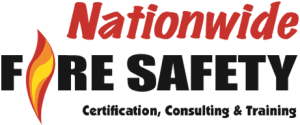Farm Fire Safety In Cork
Every year we attend farm building fires. Most of these buildings are completely destroyed by fire, often with the loss of large amounts of stock, straw, hay, farm machinery, chemicals and even livestock.
Farm fire safety Dangerous substances markersWhat you’re required to do by law
Fire safety legislation applies to all farm buildings where people work, including packing sheds, milking parlours, barns, holiday lets and farm houses used for providing bed and breakfast.
If you employ five or more people, you are required by law to carry out a re risk assessment of your farm buildings and record the findings.
Fire safety is your responsibility, and if you don’t obey the law you could lose your business or be prosecuted and face a prison sentence.
If you need more information about re safety, contact your local Fire and Rescue Service
Fire safety risk assessments
Animal premises and stables
Sleeping accommodation
All businesses must complete a fire risk assessment.
“You can help prevent res by making re safety a part of your business plan.”
Farm Safety Risk Assessment
There are steps to completing a safety risk assessment:
Identify any hazards, including:
- Sources of ignition – these could include things like welding or grinding equipment, damp hay, naked flames, munitions, poorly serviced electrics, smoking.
- Sources of fuel – this is anything that could burn, such as petrol, diesel, LPG, hay, straw.
- Dangerous substances – these could be chemicals, fertilisers, poisons, asbestos and so on.
Identify any people at risk, including:
- Anyone near your farm buildings.
- People who work for you or who are on your premises.
- Young people.
- Fire fighters and other emergency service personnel responding to a re.Evaluate, remove, reduce and protect from risk
- Evaluate the risk of re occurring.
- Evaluate the risk to people from re.
- Remove or reduce any re hazards.
- Remove or reduce any risks to people – this could be by installing smoke and re alarms, re ghting equipment, escape routes, lighting, signs or notices or carrying out maintenance on electrics and equipment.Record, plan, inform, instruct and train
- Record any significent cant ndings and the action you have taken, even if you’re not required to by law.
- Prepare an emergency plan.
- Inform and instruct anyone who might be a ected.
- Provide training. Review
Review your risk assessment on a regular basis and make changes if you need to.
Risk assessment needs to be done with every new addition to the yard machine, tools, added to the farm.
